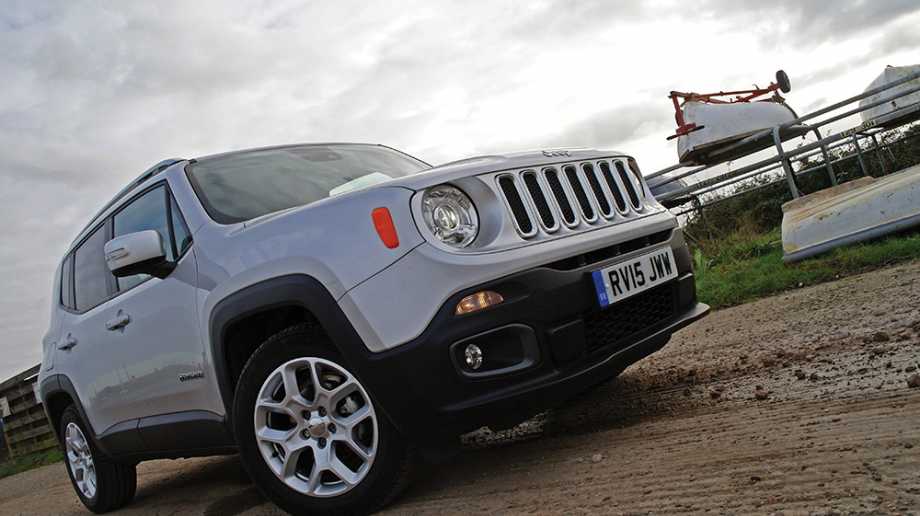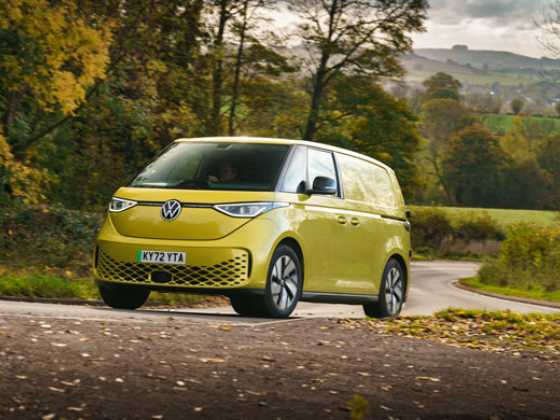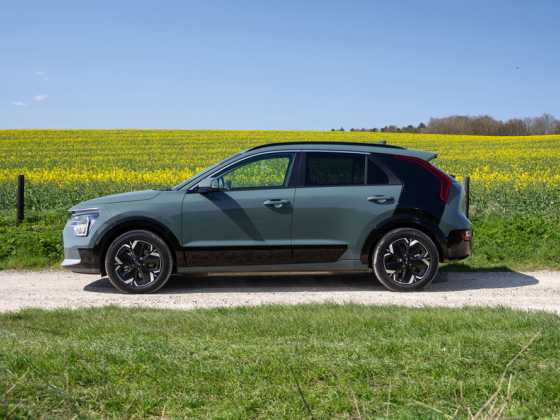Road Test: Jeep Renegade

The Renegade is Jeep’s first model built outside the US. Big on style and choice, the baby Jeep faces tough rivals in the fiercely fought compact crossover market. GreenFleet sees if it can ride rough shot over the competition.
What is it?
Now seen as more luxurious vehicles, Jeep pioneered the four-wheel drive SUV movement with the original prototype Bantam BRC Willys Jeep in 1941. Although just for military use, civilian Jeeps (CJs) first appeared in 1945, and in the intervening 70 years have become more refined. Arguably most famous for the Wrangler and Cherokee models of the mid-1980s, the Renegade name has been around since 1970, and now it returns on a car more akin to those smaller off-road Jeeps with which the company started its ascent to four-wheel drive glory.
The new Renegade is a compact crossover which is related to the Fiat 500X, the two cars sharing components as both the Italian and US companies are part of the Fiat Chrysler Automobiles group, established in 2014. Launched the same year, the latest Renegade is built in Italy alongside the small Fiat crossover, as well as in Brazil and China. The first Jeep model to be exclusively produced outside of North America, front as well as part-time and full-time four-wheel drivetrains are available. There are four engines – two petrol and two diesel with outputs from 110 to 170bhp – to choose from, too, as well as manual and nine-speed automatic transmissions.
In addition to offering a smaller than may have been traditional Jeep footprint, the Renegade also uses style as part of its weaponry to capture younger buyers to the brand. It’s boxy yet chiselled, chunky yet funky, and from the front end at least, unmistakably a Jeep. The traditional slatted grille and round headlamps of that original Willys Jeep have been updated for the 21st century and when picked out in a contrasting colour, the small crossover displays a large clue to its parentage. With its square-cut body lines and plastic-cladded wheel arches, the baby off-roader carries its high-riding looks well. Nice touches include the ‘X’-shaped rear light lenses and the smattering of ‘hidden’ Jeep grille motif logos in the cabin. The Limited model tested here sits just under the top-of-the-range Trailhawk, although all models receive the same, ruggedly‑styled interior. Full of ‘military’-style design touches, it’s certainly a different place to be, and while possibly too garish for some, the contrasting ‘Bark Brown’ and ‘Ski Grey’ leather really looked the part. Yes, the ‘Since 1941’ embossed panel above the radio is possibly a heritage touch too far, but overall, the individualism of the Renegade is appealing.
How does it drive?
Built alongside and sharing proven mechanical parts with the Fiat 500X, the Jeep Renegade shares its Italian cousin’s engines. The car we tested was a 120bhp 1.6 MultiJet II diesel-engined model coupled with a six‑speed manual gearbox. Torque of 236lb ft (320Nm) is developed from as low as 1750rpm, and the car feels spritely enough for everyday use and keeps up well with motorway traffic. The 1,404kg Renegade Limited 4x2 does the 0-62mph benchmark in 10.2 seconds, while top speed is 111mph, no doubt due to the bluff looks denting the car’s aerodynamic efficiency. The boxy shape may also contribute to the wind noise on the move, which trumps road noise from the standard 18-inch alloy wheels and 225/55 R18 tyres. Otherwise, the small Jeep is a very refined cruiser, although there is no denying what is powering the car at idle.
Over 100kg lighter than its four-wheel drive siblings, the front-wheel drive Renegade grips well, and corners flatly for a small SUV. A firm ride deflects road imperfections well enough and the baby Jeep feels comfortable on the move. As with many modern cars, steering feedback is at a minimum, although you can place the car well enough. While it aids the Renegade’s practicality, the square silhouette does have its limitations out in the open: the rear pillars are very thick and close following traffic can be shielded from view. The optional blind spot monitoring system which comes as part of the £750 ‘Parking Pack’ also includes parking sensors and a rear-view camera.
Although our test car was resolutely two‑wheel drive, the two four-wheel drive systems available on the Renegade deliver both part and full-time 4WD traction. ‘Jeep Active Drive’ is optional on all models and automatically engages all four wheels when traction is lost. At other times, the car runs in two-wheel drive mode with the rear axle disconnected, increasing fuel efficiency. ‘Jeep Active Drive Low’ is a full-time 4x4 mode, which is coupled to an active on-demand clutch to provide increased traction on all surfaces and provide off-road capability for which the Jeep brand is known. Both systems are married to Jeep’s ‘Selec‑Terrain’ traction control system, which has four or five modes for varying surfaces.
How economical is it?
The 1.6 MultiJet II diesel is the most economical and cleanest engine in the Renegade range. Our test car’s engine was Euro 5+ standard, but FCA Group has recently revised the complete range of units and it now qualifies as Euro 6. As a result, CO2 emissions fall from the 120g/km of the Euro 5+ engine to 115g/km for the Euro 6 unit. Quoted economy is improved, too, up from the 61.4mpg of our test car to 64.2mpg of 2016 models. Over our 410-mile test, we averaged 53.0mpg in the real world, which is 86 per cent of the quoted figure – a commendable result. Another benefit of the newer technology is a sizeable reduction in NOx emissions from 0.168g/km to 0.025g/km. This version of the car also features Stop/Start and ‘Eco Drive’ monitoring systems to further improve economy.
What does it cost?
The Renegade Limited 1.6 MultiJet II 120 costs £23,495 on the road, with our test car weighing in £26,820 once selected options were fitted. Metallic paint costs £700, while our car also featured upgraded two-tone alloy wheels for an extra £300 and an electric panoramic sunroof at a hefty £1,200. Optional packs range from £310 to £750. Equipment on the Renegade Limited is high, though, with cruise control, dual-zone climate control, heated front seats and steering wheel, leather upholstery, a seven-inch TFT instrument display, ‘Uconnect’ 6.5-inch colour touchscreen infotainment system (with satellite navigation and Bluetooth), and steering wheel controls. Safety kit includes forward collision and lane departure warning systems as standard, as well as rear parking sensors, electronic stability control, anti-roll mitigation, and traction control.
The Renegade range starts at £17,495 for the 1.6 E-torQ 110bhp Sport and rises to £29,000 asked for the 2.0 MultiJet II 170bhp Trailhawk. A trio of special editions are also offered. Fiat’s 500X twin starts at £14,295 in ‘City Look’ trim – the ‘Off-Road Look’ Cross Plus model with the same 1.6-litre MultiJet II 120 engine as the Jeep retails at £22,315 on the road, but interestingly is rated at 109g/km, 6g/km lower than the Renegade. The small Jeep faces myriad rivals in its competitive sector including the Mazda CX-3, the perennially popular Nissan Juke, the premium Mini Countryman, as well as the Skoda Yeti, Suzuki Vitara and Vauxhall Mokka. However, Jeep claims that in Limited 1.6 MultiJet II 120 form (as tested here) the Renegade has the most kit and is cheaper than its key rivals.
While the standard three-year/60,000-mile warranty could be longer, this can be upgraded at extra cost to seven years and 100,000 miles. Servicing intervals are every 12,500 miles, but thanks to that commonality of parts shared with the Fiat 500X, maintenance shouldn’t be on the prohibitive side.
How much does it cost to tax?
As tested, the Jeep Renegade Limited 1.6 MultiJet II 120 sits in VED Band C, drivers paying £0 during the first year of ownership, rising to £30 per year thereafter at current rates. Benefit in Kind is 23 per cent. Top models fitted with the 160g/km 2.0 MultiJet II Diesel 4WD powertrain will pay a sizeable £185 per year in VED and 32 per cent BIK. It’s a shame the Euro 6 version of the 1.6 MultiJet II diesel engine isn’t rated at just
1g/km lower, though: BIK falls by one per cent.
Why does my fleet need one?
The Renegade shrinks the traditional Jeep footprint down to a size which hasn’t been seen for quite some time. With commendable economy, stylish looks, a comfortable and striking interior, the baby Jeep is an interesting addition to the small crossover sector. The small SUV has done much to boost the US company’s sales in the UK, too – in April it was the brand’s best-selling model – and there are myriad models from which business users can choose. If rugged off-road looks appeal, there’s a lot to like about the Renegade, but opt for a sensibly-priced mid‑range, two-wheel drive car as tested here for optimum economy and tax costs.









